
Frederick Joseph Harris of Mystic CT, passed peacefully at 5:47PM on 10/24/2025, with his family by his side. “Fred” was born on 11/25/1944 at Framingham Union Hospital to Frederick Everett and MaryRosa Camilla Harris.Fred was a proud patriot who loved his country. Fred received his bachelor’s degree in Marine Engineering from Maine Maritime Academy (with Honors) in 1967.

While political winds in the U.S. have significantly tampered many ‘green’ projects, Curtin Maritime is domiciled in California, which is globally known for its strict environmental initiatives. To that end, Curtin Maritime inked a contract recently to invest $160m for eight new hybrid-electric tugboats, vessels being built by Snow & Co.

Eastern Shipbuilding Group received the Notice to Proceed from Washington State Ferries (WSF) to build two with an option for an additional 160-vehicle hybrid-electric ferries for the State of Washington. This milestone follows the first competitive bid for ferry construction in more than 25 years for the nation’s largest ferry system.
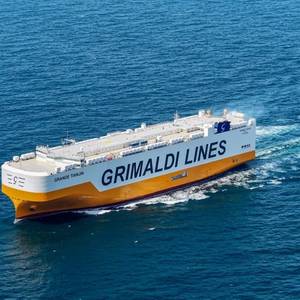
Italian shipping firm Grimaldi Group has welcomed the second ammonia-ready pure car and truck carrier (PCTC), Grande Tianjin, from Shanghai Waigaoqiao Shipbuilding (SWS), a subsidiary of China State Shipbuilding Corporation Limited (CSSC).The delivery of a 9,000-car capacity PTCT built for Grimaldi Group also marks SWS's 600th vessel or offshore platform since its inaugural delivery, the 150

On July 10, 2025, the electric solar passenger ship "Insel Mainau," designed and built by Ampereship GmbH, completed a range test on Lake Constance. During a 19-hour continuous journey, the all-electric catamaran covered exactly 211.3 kilometers on the lake, with a remaining battery capacity of 20 percent. The ship was back in regular operation the very next day.

The newly launched electric ferry Nerthus has set sail, featuring Danfoss Drives’ latest iC7 series as a key part of its all-electric propulsion system.Danfoss provided essential components for the ferry’s electric drivetrain and parts of the shoreside charging infrastructure.Molslinjen, Denmark’s largest domestic ferry operator

The crew of a ship carrying around 3,000 vehicles, including 800 electric vehicles, abandoned it off the coast of Alaska after a fire broke out onboard, its operator Zodiac Maritime said on Wednesday.The 22 crew members were safely evacuated from the ship after they failed to put out the fire, Zodiac said as it focuses on salvaging the vessel.
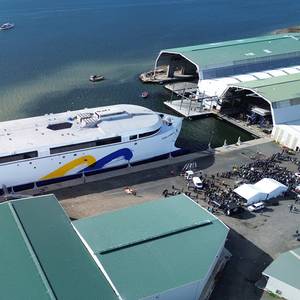
Incat Hull 096 – the world’s largest battery-electric ship – has been officially launched in Tasmania, Australia.Built for South American ferry operator Buquebus, the 130-meter ferry will enter enters service between Buenos Aires and Uruguay, operating entirely on battery-electric power, carrying up to 2,100 passengers and 225 vehicles across the River Plate.
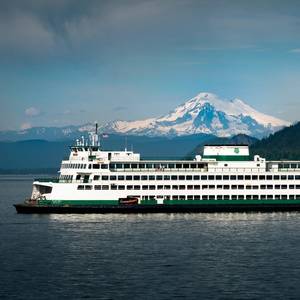
In a move to restore full domestic ferry service by summer, Governor Bob Ferguson said that Washington State Ferries (WSF) will delay the hybrid-electric conversion of two of the state’s largest ferries. The decision comes as WSF works to increase its operational fleet, ensuring that 18 vessels are in service simultaneously for the first time since 2019.
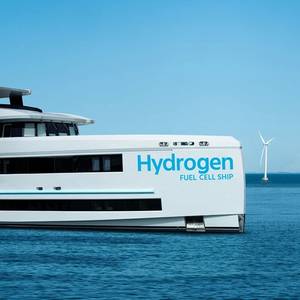
In an article by Rhonda Moniz published this week on MarineLink, Siemens sales executive Ed Schwarz noted the flexibility provided by an electric distribution “backbone” that enables ferry operators to add more batteries, switch to new fuels or become 100% emission free with fuel cells.
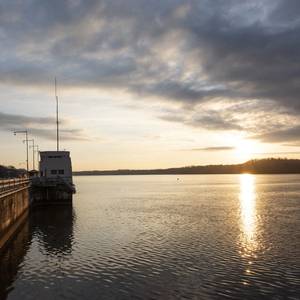
This episode of Maritime Matters: The MarineLink Podcast, delves into the critical importance of the inland waterways infrastructure in the U.S., focusing on the Chickamauga Lock Project on the Tennessee River. A trio of experts – Tracy Zea, President & CEO of WCI; Elizabeth Burks, USACE Nashville Division Chief; and Capt.

The domestic passenger vessel answers the call for cleaner and more efficient platforms. It is truly an electric time to be a part of this niche industry.In the shadow of a rapidly changing political landscape, the domestic passenger ferry sector is nevertheless seeing an increasing number of newbuild vessel orders.